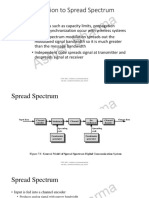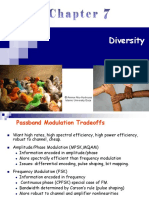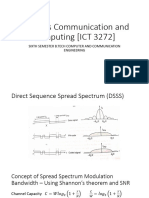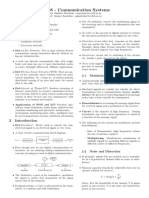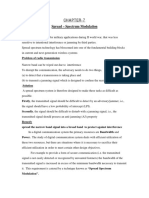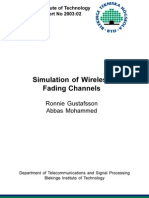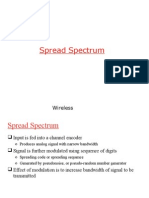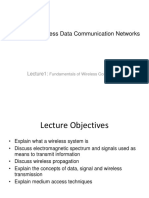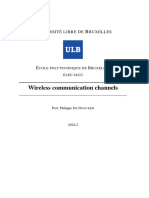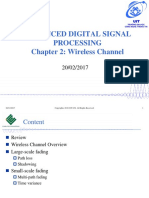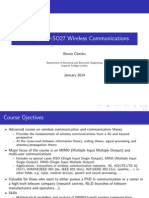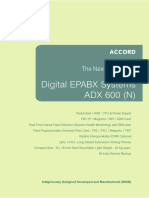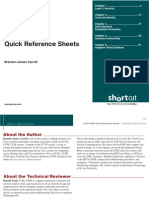0% found this document useful (0 votes)
38 views19 pagesWC - Lecture15 Direct-Sequence Spread-Spectrum Systems
Lecture 15 focuses on Direct-Sequence Spread-Spectrum (DSSS) systems within the context of wireless communication. It covers the differences between narrowband and wideband systems, the modeling of wideband channels, and the detection approaches, particularly emphasizing the use of Rake receivers for DSSS. The lecture concludes with a summary of how DSSS communication can effectively operate in wideband systems, providing diversity gain through the use of pseudonoise sequences.
Uploaded by
Akilesh. KCopyright
© © All Rights Reserved
We take content rights seriously. If you suspect this is your content, claim it here.
Available Formats
Download as PDF, TXT or read online on Scribd
0% found this document useful (0 votes)
38 views19 pagesWC - Lecture15 Direct-Sequence Spread-Spectrum Systems
Lecture 15 focuses on Direct-Sequence Spread-Spectrum (DSSS) systems within the context of wireless communication. It covers the differences between narrowband and wideband systems, the modeling of wideband channels, and the detection approaches, particularly emphasizing the use of Rake receivers for DSSS. The lecture concludes with a summary of how DSSS communication can effectively operate in wideband systems, providing diversity gain through the use of pseudonoise sequences.
Uploaded by
Akilesh. KCopyright
© © All Rights Reserved
We take content rights seriously. If you suspect this is your content, claim it here.
Available Formats
Download as PDF, TXT or read online on Scribd
/ 19

